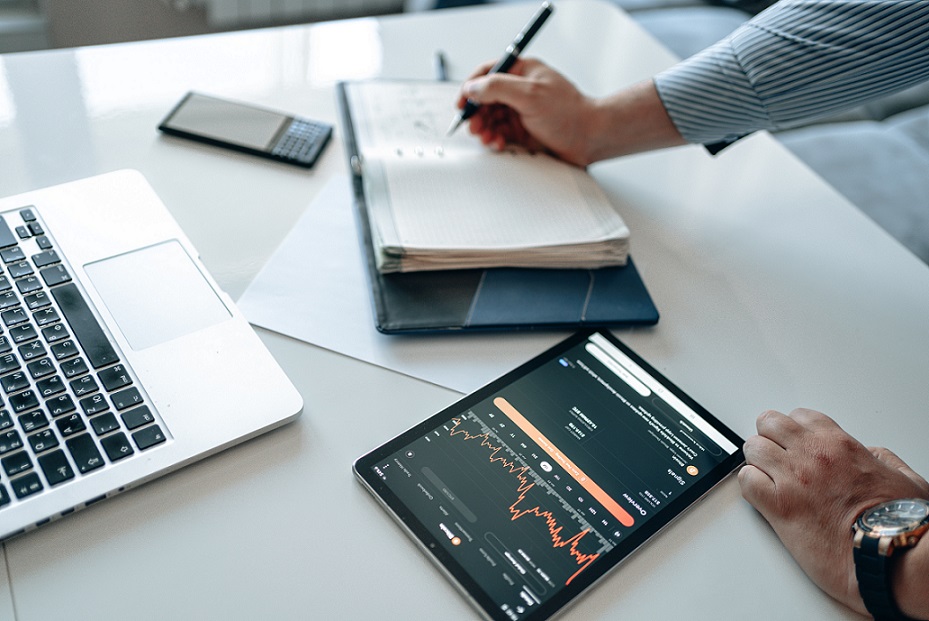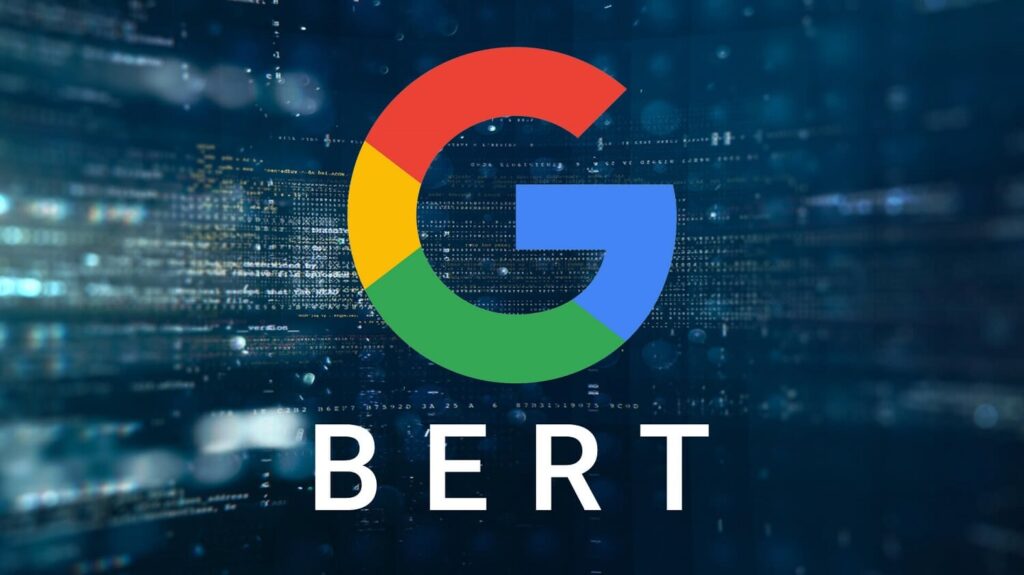SEO is a moving target, and how SEO companies stay ahead of the algorithm changes is key to online visibility. The biggest challenge for SEOs is keeping up with the frequent algorithm updates from search engines, especially Google.
Google makes thousands of changes to its search engine every year, including minor and major updates. In 2022, Google announced 4,725 changes to its search engine, that’s about 13 changes per day! That’s a lot if you think about it!
With each update, the rules change and businesses that don’t adapt fast can lose rankings and traffic. So, how do SEO companies stay ahead of these changes?

What is a Google Algorithm Update?
A Google Algorithm Update is a change to Google’s algorithms to improve the accuracy, relevance and quality of search results. These updates help Google understand user intent, prioritize high quality content and enhance the search experience.
They can impact website rankings by adjusting how Google evaluates factors like content quality, user experience and link profiles. Updates can be small or big and they often lead to changes in how websites rank for specific search queries.
In this article we’ll look at the strategies top SEO companies use to stay on top of the latest algorithm changes and maintain long term SEO strategies.
How do you stay ahead of the pack?
1. Staying Updated with Google’s Algorithm Changes
One of the main ways SEO companies stay ahead is by keeping up to date with Google’s updates. Search engine giants like Google are always rolling out new updates to their algorithms. According to Searchengineland, in 2022 alone, Google rolled out 4,725 updates, affecting everything from their ranking algorithms to the user interface and beyond. It is SEO companies and digital marketing agencies job to stay informed, so they able to adjust their strategies accordingly.
Here’s how they do it:
- Google’s Official Blog & Webmasters’ Central Blog: SEO companies follow official sources for news directly from Google. Any major algorithm change is usually announced here, along with any suggested actions.
- SEO Communities and Forums: Sites like Reddit, X.com and specialized SEO communities are great for tracking real-time updates, rumors and discussions around Google’s changes.
- Google’s Search Console Updates: SEO experts also check Google Search Console for alerts and notifications regarding their client’s performance or any penalties caused by algorithm changes.

2. Ongoing Learning and Training
SEO companies know the SEO landscape is always changing so continuous learning is key. Training, courses and certifications keep SEO experts up to date with the latest strategies and best practices.
Some ways they do this:
- Training Programs & Webinars: Many SEO companies invest in ongoing training programs, webinars and workshops to keep their teams up to date with new algorithms, ranking factors and optimisation strategies.
- Industry Conferences: SEO conferences like MozCon, SMX and Pubcon are great for networking, learning about upcoming changes and hearing from industry leaders.
- Certifications & Courses: Many SEO professionals get certified from platforms like Google Analytics, HubSpot and SEMrush to stay up to date.
3. Testing & Experimenting
SEO companies test internally before implementing new algorithm updates for clients. By testing different tactics and seeing the results they can find what works under the new rules.
A few ways:
- A/B Testing: Testing pages to see how changes in content, design and backlinks affect rankings and performance.
- Content Analysis: Testing different types of content (e.g. blogs, videos or podcasts) to see which format is favoured by the new algorithm.
- On-Page and Technical SEO Testing: Testing on-page elements (e.g. meta tags, internal linking) and technical SEO elements (e.g. page load speed, mobile optimisation) to see their impact on rankings under the new algorithm.

4. Data Analysis and Monitoring Tools
SEO companies use advanced data analysis and monitoring tools to track the impact of algorithm changes on their clients’ websites. These tools give insights into traffic fluctuations, ranking positions and more.
Tools include:
- Google Analytics & Google Search Console: These tools help SEO experts understand website performance and traffic shifts that may occur due to an algorithm update.
- SEMrush & Ahrefs: These tools allow SEO companies to track keyword rankings and backlinks and adjust SEO strategies accordingly after an algorithm change.
- Moz Pro: Known for its detailed reporting and SEO audit capabilities, Moz Pro allows companies to track page performance and find areas to improve.
5. Adapting to Changes in Searcher Behaviour
Google algorithms don’t just look at technical SEO; they also look at how users interact with search results. As searcher behaviour changes, so must SEO strategies.
SEO companies focus on:
- User Experience (UX): With algorithms like Core Web Vitals looking at user experience, SEO companies optimise websites for mobile-friendliness, page load speed and easy navigation.
- Content Relevance: Google rewards content that meets user intent, so SEO companies regularly audit content to make sure it’s aligned with current search queries and provides value to users.
- Voice Search & AI: As voice search and AI becomes more prevalent, SEO companies adjust their strategies to optimise for conversational queries and long-tail keywords.

6. Maintaining High-Quality Link Building Practices
Link building has been a part of SEO for years and it’s still a ranking factor. But Google’s algorithms are focusing more on quality over quantity so SEO companies make sure they’re building high quality relevant links not low quality links.
Some key strategies include:
- Natural Link Acquisition: Focusing on creating valuable content that attracts organic backlinks rather than relying on paid link-building schemes.
- Guest Blogging & Influencer Outreach: Building relationships with influencers and authoritative figures in the industry to secure high-quality backlinks.
- Disavowing Toxic Links: Monitoring backlink profiles to identify and remove harmful or spammy links that could trigger penalties from Google’s algorithm updates.
Read more about – Link Building for SEO – From Novice to Expert Techniques.
7. Emphasizing E-A-T (Expertise, Authoritativeness, and Trustworthiness)
Google’s focus on E-A-T (Expertise, Authoritativeness, and Trustworthiness) has increased in recent algorithm updates, particularly for industries like health, finance, and law.
SEO companies ensure that the websites they work with meet Google’s high standards for content quality and credibility by:
- Expert-Led Content: Ensuring content is written or reviewed by professionals with expertise in the subject matter.
- Building Authoritative Backlinks: Gaining backlinks from high-authority websites within the niche.
- Increasing Trust Signals: Using trust signals such as secure HTTPS websites, privacy policies, and customer reviews to enhance credibility.
Read more about how to Optimize for Google E-E-A-T SEO

8. Focus on Local SEO
Local SEO is getting more important as search engines get better at ranking location-based queries. Local searches lead to quick, high-intent action from customers. 76% of people who conduct a local search for a business on their smartphone will visit a physical location related to their search within 24 hours.
SEO companies are ahead by:
- Google My Business Optimization: Regularly optimizing and updating Google My Business profiles with business info, reviews and posts.
- Local Citations: Ensuring consistency across local business directories and citation sites to show up in local search results.
- Localized Content: Creating content for local audiences, like location-based landing pages and blog posts for the area.
8 Ways to Adapt to Google Algorithm Updates
Google’s algorithm updates are inevitable and with each update, Google refines its system to give more relevant and user-friendly results. While keeping up with every change can feel like a full-time job, there are specific strategies and best practices to help you adapt to these updates and maintain your website’s SEO.
Focus on Quality Content
Google’s updates are all about content quality and user experience. Content that provides real value to users will rank better, while keyword stuffed or low quality content will get penalized.
Creating quality content does more than just fill up a page—it grabs attention, keeps your audience engaged, boosts your search rankings and turns visitors into leads and customers. But great content isn’t just about words on a page. It’s also about smart layout, beautiful visuals, fast loading pages and overall user experience.
Read more about how to write quality SEO content
Audit and refresh old content regularly to make sure it’s relevant, accurate and engaging.
Focus on creating high quality, in-depth content that answers users’ questions and satisfies their search intent.

Stay Updated with Google’s Official Announcements
Google announces major updates on their official blogs, Google Search Central Blog. Stay informed about algorithm updates and how they affect your website. Staying up-to-date on Google’s announcements is a top priority for search professionals. Google updates were the second most popular factor considered by SEO professionals when planning their work, chosen by 18.0% of respondents in an industry survey.
Subscribe to Google’s official blogs and follow reputable SEO sources to stay up to date on updates
Use Google Search Console to monitor performance issues and see if an algorithm update is impacting your site.
Check out Searchengineland and SearchEngineJournal for the latest Google Updates
Improve User Experience (UX)
Google’s Core Web Vitals do impact rankings but aren’t the most important. They play a part in Google’s page experience signals but content quality and user experience are still top priority. Core Web Vitals just enhance the overall user experience and when users are happy with a site they’re more likely to stick around and come back which in turn can give your SEO a boost.
Test your website’s speed and performance regularly with tools like Google PageSpeed Insights or Lighthouse.
Make sure your website is mobile friendly as mobile-first indexing is now a priority for Google.
Improve navigation and make sure your website is easy to use, intuitive and responsive.

Technical SEO
With every algorithm update Google is putting more and more emphasis on technical SEO. This includes crawlability of your website, site architecture, internal linking and schema markup.
Do technical SEO audits regularly to make sure your site is crawlable by search engine bots.
Optimise your site structure with clear hierarchy and easy navigation
Use structured data (Schema.org) to help search engines understand your content better.
Don’t do Black-Hat SEO
Google’s algorithm updates are designed to detect and penalise websites that use manipulative tactics like keyword stuffing, cloaking and link farms. Following ethical SEO practices is key to staying in Google’s good books. Google has reportedly issued approximately 750,000 manual penalties for web spam-related issues every month since 2020.
Always focus on providing valuable content rather than trying to game the system with shortcuts.
Never buy links or use black-hat tactics that can lead to penalties and loss of rankings.
Focus on Mobile-First Indexing
With Google moving to mobile-first indexing it’s important to optimise your website for mobile users. Websites that perform well on mobile devices are favoured in search rankings especially with more and more mobile users. As of the start of 2025, 58.7% of all website traffic worldwide is generated from mobile devices (excluding tablets).
Ensure your website is responsive, meaning it adapts seamlessly to any device.
Prioritize mobile-friendly design elements, such as large, legible fonts and touch-friendly navigation.

Monitor Your Backlink Profile
Backlinks are still a ranking factor but Google’s algorithms now focus more on quality of links rather than quantity. Low quality backlinks from spammy sites can hurt your rankings. Did you know that 93.8% of link builders prioritize link quality over quantity. According SEO.com, industry professionals overwhelmingly recognize the importance of link quality (relevance, authority) as the primary factor for improving search rankings and avoiding penalties from low-quality, spammy links.
Regularly audit your backlink profile using Ahrefs or SEMrush
Focus on getting high quality, authoritative backlinks through guest posts, partnerships and content marketing.
Disavow any toxic or spammy backlinks that can harm your site’s reputation.
Adapt to User Search Intent
Search intent has become one of the most important factors in recent algorithm updates. Google now matches search queries to content that best satisfies the user’s needs whether it’s informational, navigational, transactional or commercial intent.
Analyze your target audience and understand what type of search queries they will use.
Tailor your content to directly address user intent by providing helpful information in the form of blogs, FAQs and guides.
Read more about EcoSEO Google’s algorithm update recovery services
Biggest Google Algorithm Updates in the Last 5 Years
Google’s algorithm updates are designed to improve search results and provide users with the most relevant and trustworthy content. Over the last 5 years Google has rolled out several big updates that affected how websites rank in search results.

BERT Update (October 2019)
The BERT update was a big one. BERT uses natural language processing (NLP) to understand the context of words in a search query. It makes Google interpret search queries like a human would, by looking at the entire sentence not just individual keywords. By October 2020, Google stated that it was using BERT’s deep learning system on almost every single English-based query done on Google Search.
Impact:
- BERT helps Google understand complex and conversational queries, so users can find more relevant content.
- Websites with specific, in-depth content aligned with user intent saw a win, while those with shallow, keyword focused content lost.
Core Web Vitals Update (June 2021)
The Core Web Vitals update was a big shift for Google towards user experience (UX). This update looked at three key metrics for page loading performance, interactivity and visual stability: Largest Contentful Paint (LCP), First Input Delay (FID) and Cumulative Layout Shift (CLS). As of a 2025 analysis, only 21.98% of origins (websites) across the web met the Core Web Vitals criteria by achieving a ‘good’ score for Largest Contentful Paint (LCP), First Input Delay (FID), and Cumulative Layout Shift (CLS).
Impact:
- Sites that loaded fast, were interactive and had a stable layout saw a ranking boost.
- Sites that loaded slow, had poor mobile experience or content that shifted unexpectedly lost ranking.
- Google added these to their broader page experience ranking signal and made user experience a bigger deal.

Mobile-First Indexing (March 2020)
In March 2020 Google went mobile-first, meaning they started using the mobile version of a website as the primary source of content for indexing and ranking. Before this they were using the desktop version of websites to determine rankings. In March 2020, Google announced that 70% of sites had already been moved to mobile-first indexing.
Impact:
- Mobile friendly designs, fast loading times and great mobile user experience were prioritised in search results.
- If your website wasn’t mobile optimised it likely dropped in rankings as Google started indexing mobile versions first.
- Businesses had to prioritise mobile optimisation to avoid losing organic search visibility.
Passage Ranking Update (February 2021)
The Passage Ranking Update was another big update that improved how Google ranks long-form content. Google started identifying individual passages of a page that are most relevant to a user’s search query instead of the whole page.
Impact:
- This update helped websites with long-form content rank for very specific queries that were previously hard to capture.
- Content that had valuable information but wasn’t ranking for broad search terms was now more likely to show up for long-tail searches.
- For SEO strategies this meant focusing on creating high quality content that answers a range of specific user queries.

June 2021 Core Update
The June 2021 Core Update was part of a bigger series of updates to improve search results overall. Google said this update was about rewarding great content and hiding sites with thin or low quality pages.
Impact:
- Websites with well researched, authoritative content saw rankings up.
- On the other hand, sites with low value content, keyword stuffing or too many ads saw rankings down.
- The update made E-A-T (Expertise, Authoritativeness, Trustworthiness) even more important when creating content.
August 2021 Core Update
The August 2021 Core Update was another broad update to refine search quality. It was about improving Google’s ability to understand content based on user intent and factoring in content depth and trustworthiness. Google’s ranking systems use E-E-A-T (Experience, Expertise, Authoritativeness, and Trustworthiness), and of these aspects, Trust is the most important for content, particularly for YMYL (Your Money or Your Life) topics, which are often affected by broad core updates like the one in August 2021.
Impact:
- The update affected many industries but websites that showed authority, trust and content that matched search intent did better.
- Sites that relied on old SEO tactics like keyword stuffing or spammy link building saw rankings down.

Page Experience Update (August 2021)
This was a broader algorithm update that took into account several user experience signals including Core Web Vitals, mobile usability, HTTPS and absence of intrusive interstitials (pop-ups).
Impact:
- Sites that delivered on speed, usability and visual appeal saw ranking gains.
- Sites with intrusive ads or poor mobile experiences were likely hit, saw ranking drops.
- Google announced this would be a continuous ranking signal, so page experience will be a ongoing ranking factor.
Product Reviews Update (April 2021 and December 2021)
The Product Reviews Update was to improve rankings for product review pages that were highly detailed, well researched and user focused. Google wanted to rank reviews that went beyond the typical manufacturer descriptions and provided in-depth insights from actual users or experts.
A survey in 2025 indicated that 96% of consumers said ratings and reviews were the most influential factor in their purchase decisions, ranking higher than search results or recommendations from friends and family, underscoring Google’s move to prioritize this user-focused content.
Impact:
- Helpful, comprehensive reviews with hands-on experience were rewarded.
- Thin, generic reviews or those that just rehashed product descriptions were demoted.
- This update highlighted the importance of E-A-T (Expertise, Authoritativeness, Trustworthiness) in review content.

Spam Update (June 2021 and November 2021)
The Spam Updates in June and November 2021 targeted sites that were doing manipulative or deceptive SEO. Google is getting better at detecting and penalizing spammy content especially content created to deceive or manipulate rankings. In 2021, Google detected six times more spam than it did in 2020, demonstrating a significant year-over-year increase in the effectiveness and activity of its spam detection systems against manipulative content.
Impact:
- Sites that did black-hat SEO, like cloaking, hidden text and unnatural link building got hit big time by this update.
- This update emphasizes the importance of ethical SEO and focusing on providing valuable content.
MUM (Multitask Unified Model) Update (May 2021)
Google’s MUM (Multitask Unified Model) is the future of search. It’s designed to understand complex queries and give users more relevant results based on intent, context and even images or videos.
Impact:
- MUM’s natural language can understand complex multi-part queries and give more accurate results.
- It can also surface information from different formats like text, images and videos to answer user queries.

FAQ Section
How often does Google update its algorithm?
Google updates its algorithm multiple times a year, with several small updates often and a few big updates annually.
Will I get penalized after an algorithm update?
Not necessarily. If you follow Google’s quality guidelines, you won’t get penalized. But if you do black-hat SEO or poor content, you may see your rankings drop.
How do I know if an update has hit my site?
Monitor your website in Google Search Console and use SEO tools to see if there’s a change in traffic or rankings after an update.
What’s the best way to recover from a penalty caused by an algorithm update?
Focus on improving your content, make it valuable and user-centric. Regularly audit your site for technical issues, toxic backlinks or low quality content.
Can algorithm updates affect my whole website or just specific pages?
Both. Big updates like Core Web Vitals and BERT can affect your whole site, but updates targeting specific issues like product reviews or spam can only affect specific pages.
Final Thoughts
Google’s algorithm updates will keep coming and keeping up with them can be tough, but understanding the impact is key to maintaining or improving your rankings.
It’s all about content quality, user experience and search intent now more than ever. Stay updated, follow SEO best practices and adapt to Google’s ongoing changes and you’ll be ahead of the competition and driving organic traffic to your site.



